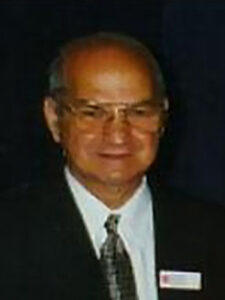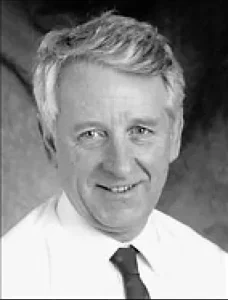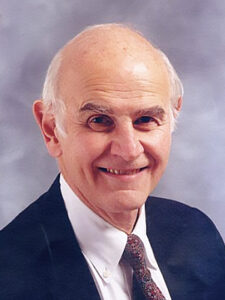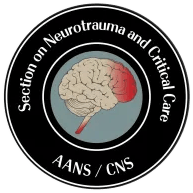Lectures
The Joint Section of Neurotrauma & Critical Care has three named lectures. Learn about the lectures and the inspiration behind lectures below.
(1) The Chuck Noll Lecture on Neurotrauma is sponsored by the Chuck Noll Foundation and is given each spring at the AANS Annual Meeting.
- 2019: Joseph Charles Maroon, MD, FAANS(L), Concussion and CTE – Personal Reflection and Perspective
(2) The Anthony B. Marmarou Memorial Neurotrauma Lecture is sponsored by the Integra Foundation and is given each spring at the AANS Annual Meeting.
- 2019: Thomas P. Bleck, MD, MCCM, FNCS, ICP to BOOST3: A Play in Five Acts
- 2018: Claudia S. Robertson, MD, Cerebrovascular Dysfunction after Traumatic Brain Injury
- 2017: Daniel B. Michael, MD, PhD, FAANS, Mechanisms of TBI: Can We Learn the Meaning of the Message by Studying the Chemistry of the Ink
- 2016: Julian E. Bailes, Jr., MD, FAANS, Mechanisms and Physics of Traumatic Brain Injury – Revisited
- 2015: Raj K. Narayan, MD, FAANS, Traumatic Brain Injury – Where Next?
(3) The J. Douglas Miller Neurotrauma Lecture is sponsored by NICO Corporation and is given each fall at the CNS Annual Meeting.
- 2018: Howard M. Eisenberg, MD, FAANS, A Novel Drug for the Treatment of Traumatic Brain Injury
- 2016: Jamshid Ghajar, MD, PhD, FAANS, The Eye in TBI
- 2014: Sir Graham Teasdale, FRCP, FRCS, The GCS – Then and Now
Chuck Noll
Chuck Noll is certainly well known as the Hall of Fame coach who helped turn the Steelers into an NFL powerhouse, leading the franchise to a remarkable four Super Bowl wins in just six years. Chuck, a man of few words, remains to this day the standard by which all others who coach the Black and Gold will be measured.
But what you may not know is Chuck Noll’s critical role in helping to dramatically increase the understanding of concussions, and pioneered important changes to testing concussions in athletes. His inquisitive mind ultimately led to substantial safety changes across many different sports and levels of competition.
In an era when little was known about concussions, Noll’s commitment to the well-being of his players led to a breakthrough. In 1990, when one of those players had to sit out because of a concussion, Noll asked Dr. Joseph Maroon, the Steelers’ neurosurgeon, to look into head injuries and their effects.
Read More about Chuck Noll
Anthony Marmarou
 Anthony Marmarou, Ph.D. served as Nemuth Distinguished Professor and Vice Chair of Research in the Department of Neurosurgery, VCU School of Medicine, Technical Director of the American Brain Injury Consortium (ABIC) and the International Epilepsy Consortium (IEC), Co-director of the Normal Pressure Hydrocephalus Clinic, and Professor of Radiology, Biomedical Engineering, and Physiology.
Anthony Marmarou, Ph.D. served as Nemuth Distinguished Professor and Vice Chair of Research in the Department of Neurosurgery, VCU School of Medicine, Technical Director of the American Brain Injury Consortium (ABIC) and the International Epilepsy Consortium (IEC), Co-director of the Normal Pressure Hydrocephalus Clinic, and Professor of Radiology, Biomedical Engineering, and Physiology.
Dr. Marmarou served our country in the U.S. Navy during the Korean War and subsequently attended Drexel University, receiving a Bachelor of Science in Electrical Engineering. He continued his education at the University of Pennsylvania, where he received his Master’s in Control Engineering, and finally, Temple University School of Medicine, where he completed an NIH Special Research Fellowship and a Ph.D. in Biomedical Engineering. His scientific exploration of intracranial pressure dynamics in traumatic brain injury began at Albert Einstein Medical in the Bronx, New York and was continued during his 27 years with the VCU Department of Neurosurgery in Richmond, Virginia. Well known for his commitment to his research on Traumatic Brain Injury (TBI) and Normal Pressure Hydrocephalus (NPH), Dr. Marmarou was considered a world authority on fluid dynamics within the brain and spinal cord. His tireless efforts to communicate the results of his scientific studies on the global front earned him an international reputation as an outstanding scholar and scientist.
Dr. Marmarou was the recipient of the prestigious Javits Neuroscience Investigator Award from the National Institute of Neurological Disorders and Stroke. Dr. Marmarou, in collaboration with his longstanding research partner, Dr. Harold Young, Chairman of the Department of Neurosurgery at VCU, led an international team in developing the first clinical guidelines for diagnosis and treatment for idiopathic NPH. Their tireless efforts have resulted in the current standard of care for patients with NPH, which has directly resulted in the recovery of individuals first thought to be suffering irreversible dementia and Alzheimer’s-like symptoms. Dr. Marmarou’s statement that “Patients should explore all their options because there is always hope.” has earned him the devotion of these patients and his staff. Dr. Marmarou was one of those unique researchers who could bring basic laboratory research directly to the bedside to improve patient care and treatment.
Read More About Dr. Marmarou
Douglas Miller

Miller was born in Glasgow of a father who worked as an executive for Collins the publishers. At Glasgow Academy, then as now a testing academic school, he distinguished himself and went to the university intending to read modern languages. In midstream he decided to change and, without a science background, was accepted into the medical faculty who suspected that he was a student of great talent. In this they were right.
During the period when he rotated, as every medical student had to, from orthopaedics which had been his first interest, he came across Bryan Jennett, the world-renowned neurosurgeon. Such was Jennett’s influence that Miller decided to make his life in neurosurgery. Jennett told me yesterday: “Miller was involved in developing organized care for patients suffering from head injuries in collaboration with accident surgeons and anesthetists. He devised means of measuring and treating the dangerous high intracranial pressures that often complicate such injuries. He was also active in laboratory experimentation in this field in Glasgow, Philadelphia and Richmond, Virginia.
“It is a widespread view in the biological sciences faculty of Edinburgh University that their colleague Miller was in the world class of expertise in the complications of head injuries. He was extremely prominent on the international stage of neurosurgery. Only weeks ago, for example, he was at the important conference on head injury at Toronto, giving a paper on neurotraumas, “Brain Ischaemia after head injury: Monitoring the Threat”. Earlier this summer he was in Berlin at the General Conference on Neurosurgery addressing his colleagues from all round the world on “secondary insults in head injury and clinical trials”. He was a prominent figure at the congresses of the European Association of Neurosurgeons. And young neurosurgeons from many countries spent time in his clinics and laboratories as part of their training.
Read More about Dr. Miller
Charles Tator

Born: August 24, 1936
Category for Induction: Builder
Education: M.D. University of Toronto 1961; Ph.D. Neuropathology, University of Toronto 1965
Since the early 1970s, Dr. Charles Tator has had a resounding impact on spinal cord injury research, prevention and treatment, and on training our next generation of leading surgical scientists. An eminent scientist, neurosurgeon, professor and administrator, his laboratory was the first in Canada to study acute spinal cord injury from a basic science perspective.
Dr. Tator’s research transformed our world’s understanding of spinal cord injury. He developed one of the first experimental models of spinal cord injury in small laboratory animals in 1978. He showed that post-traumatic ischemia is a major secondary injury mechanism. He invented the inclined plane technique of functional assessment. Dr. Tator was one of the first to recognize the proliferation of endogenous stem cells in the injured adult mammalian spinal cord, and to assess the therapeutic value of transplantation of adult spinal cord derived stem cells after injury. He developed the first acute spinal cord injury unit in Canada, and he is known for the introduction of halo vests for treatment.
Read More About Dr. Tator
Share this

